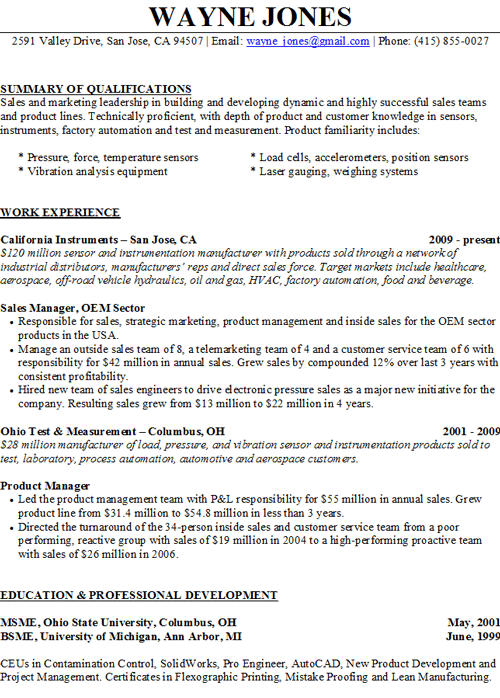Constructing a Powerful Resume
Employers prefer a crisp-looking CV that gets to the point. By using the example on this page as a template, you’ll improve both the style and the substance your resume.
-
Layout. Add interest and clarity by using bullets, indents and varying font styles (such as bold and italic letters). Avoid using unusual fonts, photos or graphics.
-
Length. The general rule is: one page for early-career (entry level to 10 years); two or three pages for mid-career candidates.
-
Job Data. Provide relevant detail about your past and present employers, such as product information, size and location.
-
Measurables. Quantify your job duties, reporting relationships and achievements with real numbers.
-
Dates. Make sure the dates are clear and without gaps. If you’re a mid- to late-career candidate, you can save space by lumping early-career jobs together.
-
Degree Credentials. Please be accurate—and honest. Misrepresenting your degree is unethical, and could result in consequences that are embarrassing—or worse.
Tip: To save time, pick an exemplary resume to use as a template, such as the (fictitious) one this page.


